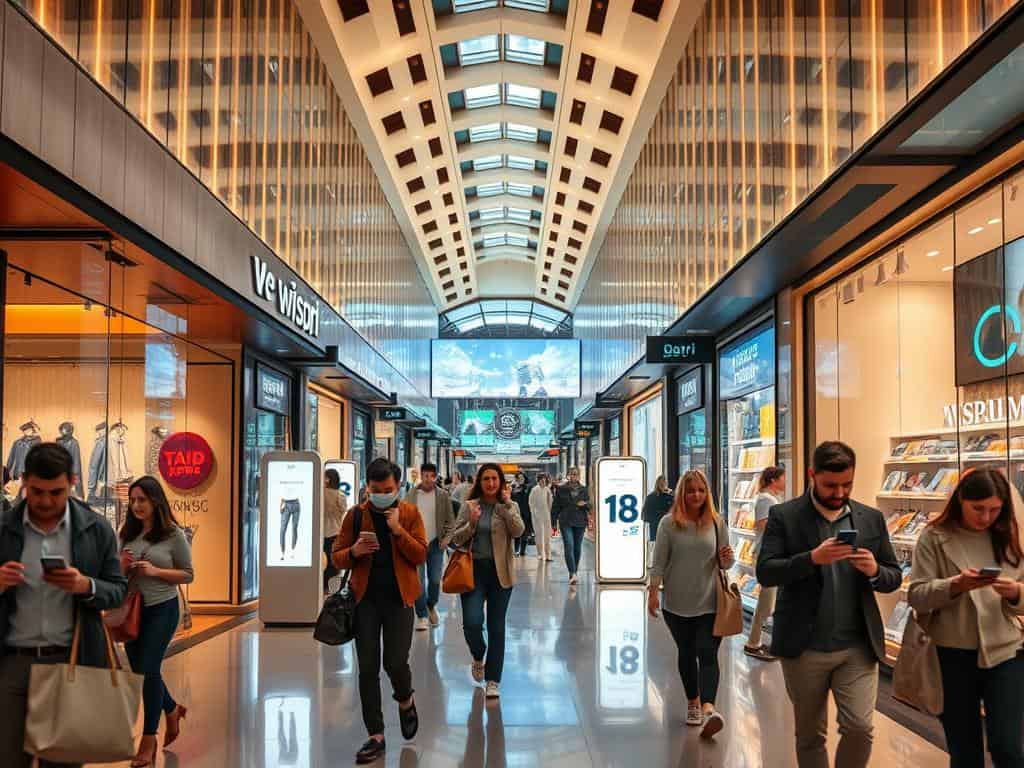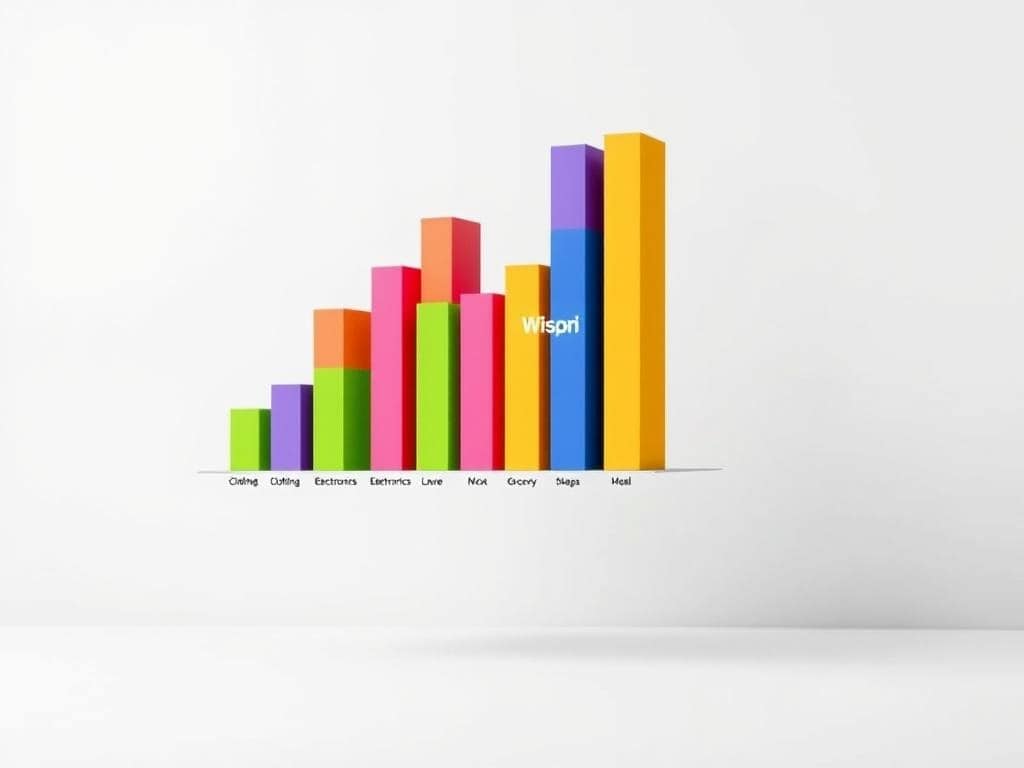The COVID-19 pandemic has fundamentally transformed the way Australians shop, leading to lasting changes in consumer behavior that continue to shape the retail landscape.
With a decade’s worth of digital adoption compressed into just 100 days, consumers and businesses alike were forced to adapt to new digital behaviors. Homebound consumers abandoned ingrained shopping habits, propelling ecommerce into hyperdrive.
As Australians continue to navigate this new retail landscape, tools like Wispri, Australia’s leading price tracking platform, are helping smart shoppers save money by monitoring product prices across multiple retailers and sending instant alerts when prices drop.
Key Takeaways
- The pandemic has driven a permanent shift in Australian shopping habits.
- Consumers have maintained many of their pandemic-era habits despite the reopening of physical stores.
- Digital adoption has been a key driver of change in the retail landscape.
- Wispri is helping Australians navigate this new shopping environment.
- Understanding these changes is crucial for both shoppers and retailers.
The Evolution of Australian Shopping Behaviour Since COVID-19
The pandemic has brought about a seismic shift in how Australians approach shopping, with a focus on necessity and convenience. The Australian retail landscape has undergone significant changes since the onset of COVID-19.

From Panic Buying to Calculated Consumption
Initially, Australians exhibited panic buying behaviors, stockpiling essentials like toilet paper and pasta. As the pandemic progressed and lockdowns became more extended, consumers adjusted to the new normal, adopting more strategic purchasing decisions. This shift from hoarding to calculated consumption reflects a change in consumer priorities, with a greater emphasis on value and convenience.
- The initial panic buying phase gave way to more thoughtful consumption patterns.
- Consumers developed new routines and priorities during extended lockdowns.
- The pandemic accelerated existing trends in Australian retail, compressing a decade of gradual change into months.
The Permanent Shift in Consumer Priorities
The pandemic has led to a permanent shift in consumer behaviors, with Australians now prioritizing value, convenience, and purpose-driven shopping. Research indicates that while Australians have returned to physical stores, their shopping behaviors reflect a hybrid approach that combines digital and in-person experiences.
| Pre-Pandemic Shopping Behavior | Post-Pandemic Shopping Behavior |
|---|---|
| Impulse purchases and brand loyalty | Calculated consumption and value-driven shopping |
| Primarily in-store shopping | Hybrid approach combining digital and in-store experiences |
| Less emphasis on sustainability and financial prudence | Greater consideration for necessity, sustainability, and financial prudence |
The evolution of Australian shopping behavior since COVID-19 reflects a fundamental shift in consumer habits and spending trends. As the retail landscape continues to adapt, businesses must respond to these changes to remain competitive.
Post-Pandemic Shopping: The Digital-First Revolution

The COVID-19 pandemic has accelerated the adoption of digital shopping in Australia, redefining the retail experience for consumers and businesses alike. As a result, the country’s retail landscape has witnessed a significant shift towards online shopping.
E-commerce Growth and Its Staying Power
Australia experienced unprecedented e-commerce growth during the pandemic, with online retail sales surging by double digits as lockdowns forced consumers to embrace digital shopping channels. This digital shift wasn’t merely temporary—data shows that e-commerce adoption has maintained significant momentum even after restrictions lifted, indicating a permanent change in how Australians approach shopping.
The convenience factor has been crucial in cementing these new habits, with many consumers discovering that online shopping saves time and offers advantages they weren’t previously aware of. Credit and debit card data revealed a nearly 20 percent increase in online spending since January 2020, underscoring the staying power of e-commerce.
The Blending of Physical and Digital Retail Experiences
Australian retailers have responded to the digital shift by investing heavily in their digital infrastructure, creating more seamless online experiences and expanding delivery options to meet consumer expectations. The most successful retail models now blend physical and digital experiences, with innovations like click-and-collect, virtual try-ons, and app-based in-store navigation becoming standard features of the shopping journey.
This digital-first approach has particularly resonated with younger Australians, but adoption spans across all age demographics, with even older consumers maintaining many of their pandemic-era digital shopping habits. As a result, retailers are focusing on creating an integrated shopping experience that combines the best of both online and offline worlds.
Category Shifts in Australian Retail Spending
Australian retail spending has undergone substantial category shifts post-pandemic. The COVID-19 pandemic led to dramatic changes in consumer behavior, with certain categories experiencing unprecedented demand.
Home, Electronics and Leisure: Boom to Normalisation
Categories such as home improvement, electronics, and leisure products saw a significant surge during the lockdowns as Australians adapted their homes for remote work and entertainment. Some retailers reported triple-digit increases in sales of items like office furniture, computers, and home gym equipment. However, as pandemic restrictions eased, spending in these categories normalized, settling at levels higher than pre-pandemic but below peak lockdown periods.
- Home improvement sales boomed as consumers invested in their living spaces.
- Electronics sales surged with increased demand for remote work tools.
- Leisure products saw significant growth as people looked for home entertainment options.

The Rebalancing of Service vs. Goods Spending
A notable shift has been the rebalancing between goods and services spending. As Australians redirected discretionary income towards experiences like travel, dining, and entertainment that were previously unavailable, the share of wallet for services reclaimed some ground. While physical goods dominated spending during the pandemic, services have started to regain their share, though not completely returning to pre-pandemic proportions.
- The pandemic saw a surge in goods spending, particularly in home and electronics categories.
- As restrictions eased, spending on services like travel and dining resumed.
- This rebalancing represents a “new normal” in Australian retail spending.
How Wispri Helps Australians Navigate the New Shopping Landscape
![]()
With price volatility on the rise, Wispri’s innovative price tracking platform is revolutionizing the way Australians shop. The post-pandemic retail environment has become increasingly complex, with strategic discounting and price fluctuations making it challenging for consumers to make informed purchasing decisions.
AI-Powered Price Monitoring Across Major Australian Retailers
Wispri’s AI-powered price monitoring system tracks product prices across major Australian retailers, including Amazon Australia, eBay, JB Hi-Fi, Harvey Norman, Officeworks, and Bunnings. This means that consumers can receive instant alerts when prices drop to their desired levels, ensuring they never miss out on genuine savings.
Avoiding Fake Sales with Historical Price Data
One of Wispri’s most valuable features is its historical price data, which helps consumers identify genuine sales versus “fake” discounts. By analyzing price trends over time, Australians can make more informed decisions about their purchases, avoiding artificially inflated prices and securing the best value for their money.
The platform’s user-friendly dashboard allows consumers to track multiple items across different retailers simultaneously, providing a comprehensive view of the market. For more advanced users, Wispri PRO offers additional premium features, while maintaining a free basic tier that makes price intelligence accessible to all Australian shoppers.
Conclusion: Embracing the Future of Australian Shopping
Australian shoppers have emerged from the pandemic with a new set of expectations, prioritizing convenience, price transparency, and seamless retail experiences. The post-pandemic shopping landscape represents a fundamental reimagining of consumer behavior that will continue to evolve in the years ahead.
Today’s Australian consumers are more digitally savvy, value-conscious, and willing to experiment than their pre-pandemic counterparts. This shift creates both challenges and opportunities for retailers and businesses. The most successful businesses will be those that embrace omnichannel strategies, recognizing that consumers now expect seamless experiences that blend the convenience of digital with the tactile benefits of physical stores.
The pandemic has accelerated a permanent shift in consumer priorities, with price transparency becoming non-negotiable. Tools like Wispri are empowering consumers to make more informed purchasing decisions, forcing retailers to compete on genuine value rather than marketing tactics. As the retail landscape continues to evolve, businesses must adapt to meet the changing needs of Australian consumers.
Looking ahead, the future of Australian shopping will be defined not by a return to pre-pandemic norms but by the continued evolution of hybrid shopping journeys that combine the best aspects of both digital and physical retail experiences. For Australian consumers, navigating this new shopping environment means leveraging technology to their advantage, being more strategic about purchases, and maintaining flexibility in how, when, and where they shop to maximize both value and convenience.
FAQ
How has the pandemic influenced Australian consumer behaviour?
The pandemic has significantly altered consumer behaviour, with a notable shift towards online shopping and a greater emphasis on convenience and value. Many Australians have adapted to new ways of buying, with a focus on curbside pickup and home delivery.
What changes can we expect in retail spending habits?
As the retail landscape continues to evolve, Australians are expected to rebalance their spending between goods and services. While there’s been a surge in spending on electronics and home goods, a return to pre-pandemic levels is anticipated as consumers resume their normal activities.
How has brand loyalty been affected by the pandemic?
The pandemic has led to a decline in brand loyalty, with many consumers becoming more price-sensitive and willing to switch to alternative brands that offer better value. This shift has forced retailers to rethink their strategies and focus on providing quality products and competitive pricing.
What role has e-commerce played in the new shopping landscape?
E-commerce has been a significant driver of change, with many Australians embracing online shopping as their preferred method of purchasing. Retailers have responded by investing in their digital capabilities and offering a seamless omnichannel experience.
How can retailers adapt to the changing consumer landscape?
To remain competitive, retailers must be agile and responsive to changing consumer needs, leveraging data analytics and AI-powered tools to inform their strategies and stay ahead of the competition.

